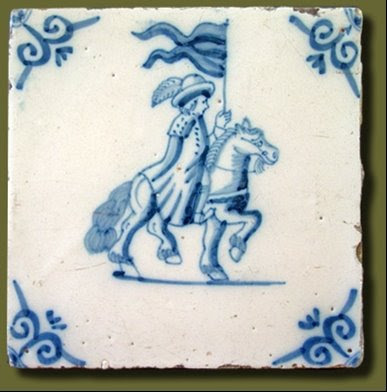Portrait of Mark Hampton by Henry Koehler which graces the back cover of the Legendary Decorators book.
Mr. Hampton wrote two books; Mark Hampton on Decorating, published in 1989, a collection of essays and illustrations largely drawn from his columns in House & Garden magazine and Legendary Decorators of the Twentieth Century (there is that word Decorator again) published in 1992 which profiled everyone who was anyone in the decorating world from Elsie DeWolf and Billy Baldwin to Madeleine Castaing. Sadly, both books are now out of print but widely available from used sources online. I was introduced to the Legendary Decorators book by my business partner Barbara, who had used it as a text when she was studying at the New York School of Interior Design.
Mr. Hampton wrote two books; Mark Hampton on Decorating, published in 1989, a collection of essays and illustrations largely drawn from his columns in House & Garden magazine and Legendary Decorators of the Twentieth Century (there is that word Decorator again) published in 1992 which profiled everyone who was anyone in the decorating world from Elsie DeWolf and Billy Baldwin to Madeleine Castaing. Sadly, both books are now out of print but widely available from used sources online. I was introduced to the Legendary Decorators book by my business partner Barbara, who had used it as a text when she was studying at the New York School of Interior Design.

An illustration by Mr. Hampton from the On Decorating book which talks about "The Incomparable Reds" *Notice the Modigliani painting reflected in the mirror that belonged to the owner's grandmother.
Both books are filled with grisaille (monochrome) and full color watercolor illustrations done by Mr. Hampton in the most delightful manner. These illustrations give credence to the fact that there is nothing more beautiful than something done by hand. In this age of mobile phones, email and Twitter, it is rewarding to look at something that is clearly not rushed or immediate. It is apparent by looking that these illustrations that it took a great amount of time to convey the feeling of the space in a far superior way than any photograph or computer illustration would allow.
Both books are filled with grisaille (monochrome) and full color watercolor illustrations done by Mr. Hampton in the most delightful manner. These illustrations give credence to the fact that there is nothing more beautiful than something done by hand. In this age of mobile phones, email and Twitter, it is rewarding to look at something that is clearly not rushed or immediate. It is apparent by looking that these illustrations that it took a great amount of time to convey the feeling of the space in a far superior way than any photograph or computer illustration would allow.

An illustration of the dressing table belonging to Mr. Hamptons wife in their New York residence from the On Decorating book.
An illustration of a room done by the master Billy Baldwin from the Legendary Decorators book showing Baldwin's trademark etageres.
I have only included some of my favorites from the two books here and encourage you to seek out these books and experience the magic or Mr. Hampton’s hand for yourself. I will post more of these fantastic images as part of another post.
David Hansen
I have only included some of my favorites from the two books here and encourage you to seek out these books and experience the magic or Mr. Hampton’s hand for yourself. I will post more of these fantastic images as part of another post.
David Hansen







































